When archaeologist Howard Carter and his colleagues discovered the tomb of Pharaoh Tutankhamun (commonly known as Tut) 100 years ago, he reported seeing incredible treasures from this burial site.
Fascinating Artifacts from the Tomb of Pharaoh Tutankhamun
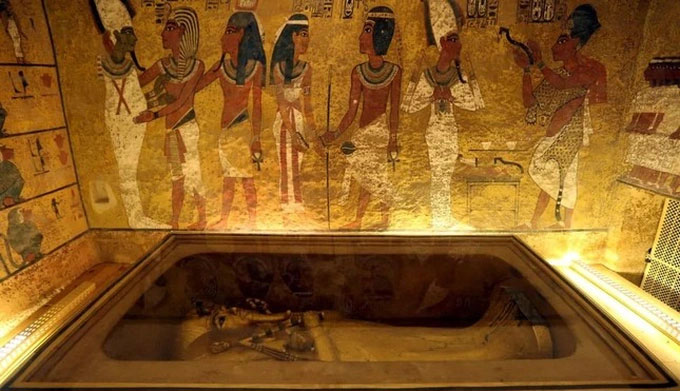
The tomb of King Tutankhamun, near Luxor, Egypt.
The tomb of Tutankhamun was discovered by archaeologists in the Valley of the Kings on November 4, 1922, filled with numerous treasures. Some of these artifacts, such as his death mask, are widely known. However, other items, like a dummy that may have been used to choose his attire, are less famous but provide deep insights into the life of King Tut.
Here are 10 fascinating artifacts from the tomb of Tutankhamun and what they reveal about the iconic ancient Egyptian pharaoh 100 years after the discovery of his remains.
1. The Death Mask
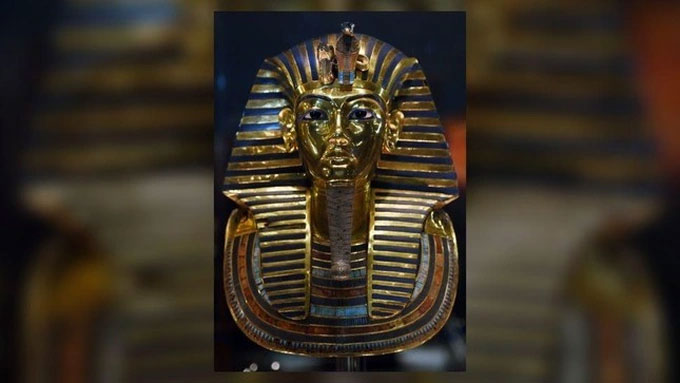
The golden mask of King Tutankhamun displayed at the Egyptian Museum in Cairo after restoration on December 16, 2015.
The death mask is perhaps the most famous artifact found in his tomb. This intricately decorated mask, measuring 53 cm long, is primarily made of gold, inlaid with precious stones and colored glass, and weighs up to 10 kg, as noted by Galal Ali Hassaan, an honorary professor at the Mechanical Design Department of Cairo University, in a 2016 article published in the International Journal of Advances in Engineering and Technology.
“The eyes are made from obsidian and quartz,” Hassaan writes, noting that the mask depicts King Tutankhamun with a long beard and a headdress shaped like a cobra and a vulture.
On the back of the death mask is an inscription from the “Book of the Dead”, written in hieroglyphs, suggesting that the mask may resemble the face of the deceased, as noted by Marianne Eaton-Krauss, a senior member at the American Research Center in Egypt, in her book “Tutankhamun: The Unknowns” (Bloomsbury, 2016). She points out that the third coffin in which Tutankhamun was buried bears the same inscription.
2. Iron Dagger
Two daggers belonging to King Tut were found in his tomb: one made of gold and the other of iron.
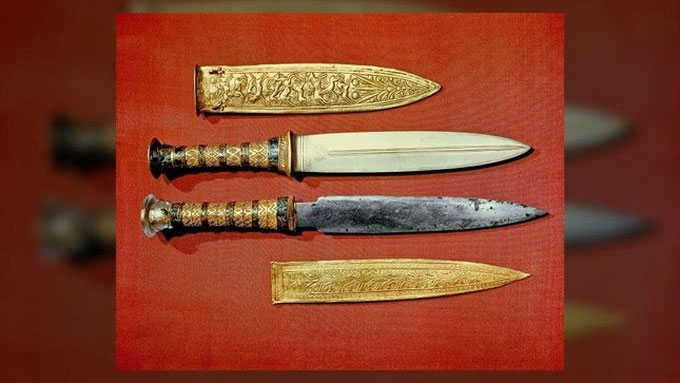
King Tutankhamun was buried with two daggers – one made of iron and the other of gold.
King Tutankhamun was buried with two daggers – one made of iron and one made of gold. Both daggers were found wrapped in multiple layers of the pharaoh’s mummification wrappings, according to the book “Iron from the Tomb of Tutankhamun” (American University in Cairo Press, 2022).
Researchers noted in the book that the iron dagger was placed on Tutankhamun’s right thigh. The type of iron used in the dagger is not found on Earth, as it was crafted from a meteorite, and the dagger features a crystal blade with an intricately carved gold handle. They further write that the gold dagger, also with a gold handle adorned with exquisite carvings, was found above Tutankhamun’s abdomen.
Both daggers show signs of wear, and Katja Broschat, a conservator at the Römisch-Germanisches Zentralmuseum and co-author of “Iron from the Tomb of Tutankhamun”, noted that it is uncertain whether the daggers were ever used in a hunt or for other activities.
3. Gaming Table
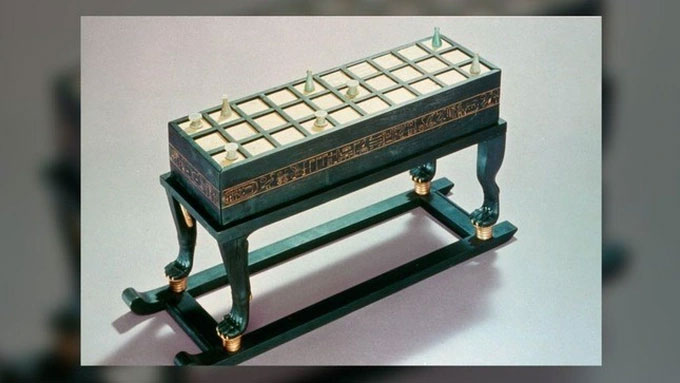
The gaming table found in the tomb of Tutankhamun, dating back to the 14th century BC, made of ebony veneer and inlaid with ivory.
The tomb of Tutankhamun contained a gaming table that shows at least four games were played on it, according to the book “The Ancient Egyptians at Play: Board Games Across Borders” (Bloomsbury, 2016).
Some game pieces found in the tomb were made of ivory, and these boards appear to be designed for a game involving twenty pieces.
The rules of both games are unclear. The Grand Egyptian Museum notes that the board was played with a grid of 30 squares, and the objective was to safely navigate all pieces while preventing the opponent from doing the same.
4. Fashion Dummy
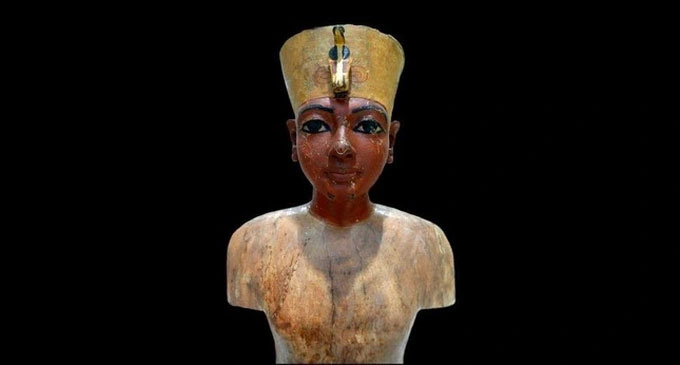
A bust of Tutankhamun, possibly a dummy for the king’s clothing or jewelry, discovered in Tut’s tomb.
One of the lesser-known treasures from Tutankhamun’s tomb is a dummy used to assist in selecting, adjusting, and storing the king’s wardrobe and jewelry.
“Of course, Tut was a very stylish dresser with a massive wardrobe, for both his lifetime and the afterlife,” said Laura Ranieri Roy, founder and director of Ancient Egypt Alive, an educational organization.
Ranieri Roy noted, “There were hundreds of garments – 12 luxurious cloaks, dozens of sandals, undergarments, stockings, and even children’s clothing of King Tut. This dummy could be used to hang and display elaborate cloaks and jewelry, and it may have been used by attendants to create and prepare outfits, adjusting the king’s ceremonial attire.”
5. Golden Sandals
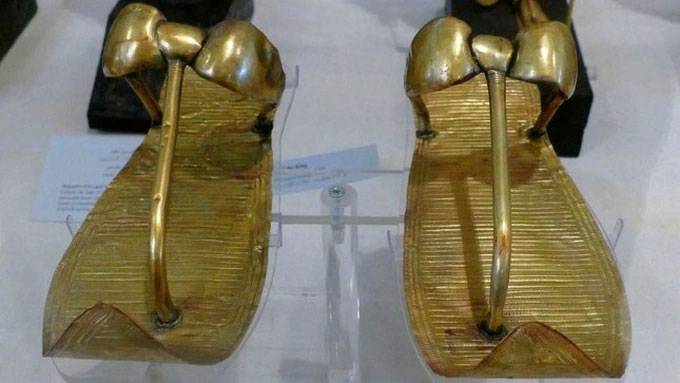
The golden sandals of King Tut appear to have been used at the time of his death, rather than during his lifetime.
The mummy of Tutankhamun was found wearing a pair of golden sandals. Andre Veldmeijer, director of the Ancient Egyptian Footwear Project, stated that King Tutankhamun may not have worn these sandals while alive. Such sandals might have been specially made for his burial.
Veldmeijer explained that the golden sandals would have been cut from a gold sheet and embossed, possibly on a soft surface protected by a layer of leather, and then shaped and decorated.
6. The Coffin of King Tut
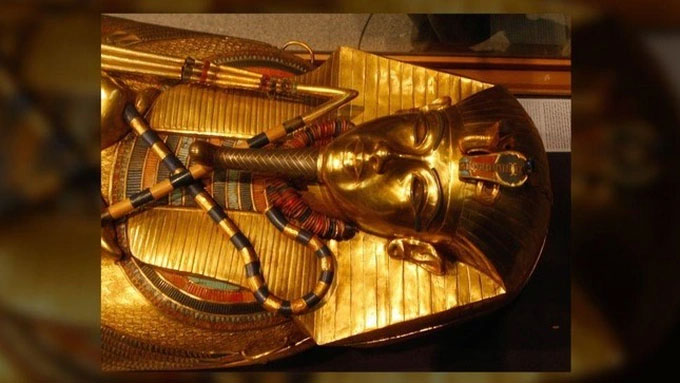
One of the solid gold coffins of King Tutankhamun displayed at the Egyptian Museum in Cairo, photographed on October 22, 2007. This is the third and innermost coffin containing the royal mummy.
Tutankhamun was placed in three nested coffins. The combined weight of these coffins is approximately 1.3 tons, as noted by Joyce Tyldesley, a professor of Egyptology at the University of Manchester in the UK, in her book “Tutankhamun: The Search for the Egyptian King” (Basic Books, 2012). The large size of the coffins, along with the relatively small size of Tutankhamun’s tomb, made them very difficult to open, Tyldesley noted.
All three coffins show Tutankhamun with a long beard and holding an enemy. The Egyptian Ministry of Tourism and Antiquities notes that the outer coffin is made of gilded wood and features colored glass inlays on the enemy and its fragments.
Tyldesley mentioned that the second coffin is also made of gilded wood and was found with various plants – including wilted lotus flowers – on it.
The Egyptian Ministry of Tourism and Antiquities notes that the innermost coffin is made of solid gold and was found wrapped in linen. Tutankhamun was laid to rest inside this innermost coffin, with the death mask and other artifacts on him.
7. The Throne of King Tut
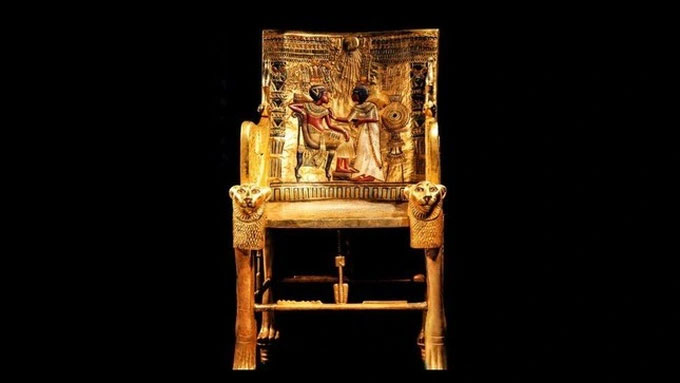
The throne of King Tut.
“The Throne” of King Tutankhamun is primarily made of wood and covered with gold and silver, semi-precious stones, enamel, and colored glass. It depicts the sun disk Aten shining down upon Tut and his queen Ankhesenamun.
Eaton-Krauss stated that two thrones were found in Tutankhamun’s tomb. One was made of ebony, and because it resembled a bishop’s chair, Carter referred to it as “the church throne,” although there is no evidence to suggest it had any particular religious purpose.
The other throne, sometimes referred to as “the golden throne,” features depictions of Tutankhamun and his wife, Ankhesenamun, as noted by Tyldesley in her book. In her notes, Carter wrote that Ankhesenamun appears to be applying ointment or perfume to Tutankhamun.
This throne stands about 1 meter tall and is covered in linen. Tyldesley writes that it is a wooden chair with a sturdy, slightly slanted back, armrests, side panels, and four legs carved to resemble lion’s paws. The chair is adorned with gold and silver leaf and inlaid with colorful stones, glass, and glazed ceramics.
Tyldesley states: “Like most ancient Egyptians, the throne was a luxury item, symbolizing not only wealth but also power.“
8. Chariot
The golden chariot was discovered in the tomb of King Tutankhamun. In this 2019 photo, the chariot awaits restoration at the Grand Egyptian Museum in Giza.
According to research published in 2020 in the journal Comité international pour l’égyptologie (translated from French as “International Committee for Egyptology”), Carter referred to two of the most complex chariots as “state chariots,” the group notes in their article. Researchers conducted an in-depth analysis and restoration of one of the chariots and found that it features a canopy overhead that could provide shade for its riders.
The chariot also depicts images of six foreign captives on its right side, as well as hieroglyphs bearing the names of Tutankhamun and Ankhesenamun. It also features an image of a falcon with outstretched wings and a hieroglyphic inscription stating that the falcon represents Horus, an Egyptian god associated with the sun.
“The entire design can be understood as the appearance of the royal couple revered by the Egyptian people, ensuring the life and stability of the king and queen under the sun god soaring overhead and protecting them,” the research team writes in their article.
9. Trumpet
Two trumpets—one made of silver and the other of gold-plated bronze—were found in the tomb of Tutankhamun and are among the oldest surviving labrosone trumpets, according to the book “The Science of Brass Instruments.“
It is unclear whether they could be played during Tutankhamun’s time, researchers note.
10. Dog-Headed Deity Statue
The statue of Anubis, an ancient Egyptian god with a jackal head associated with mummification, was found in the tomb of Tutankhamun. It is made of wood and gold.


















































